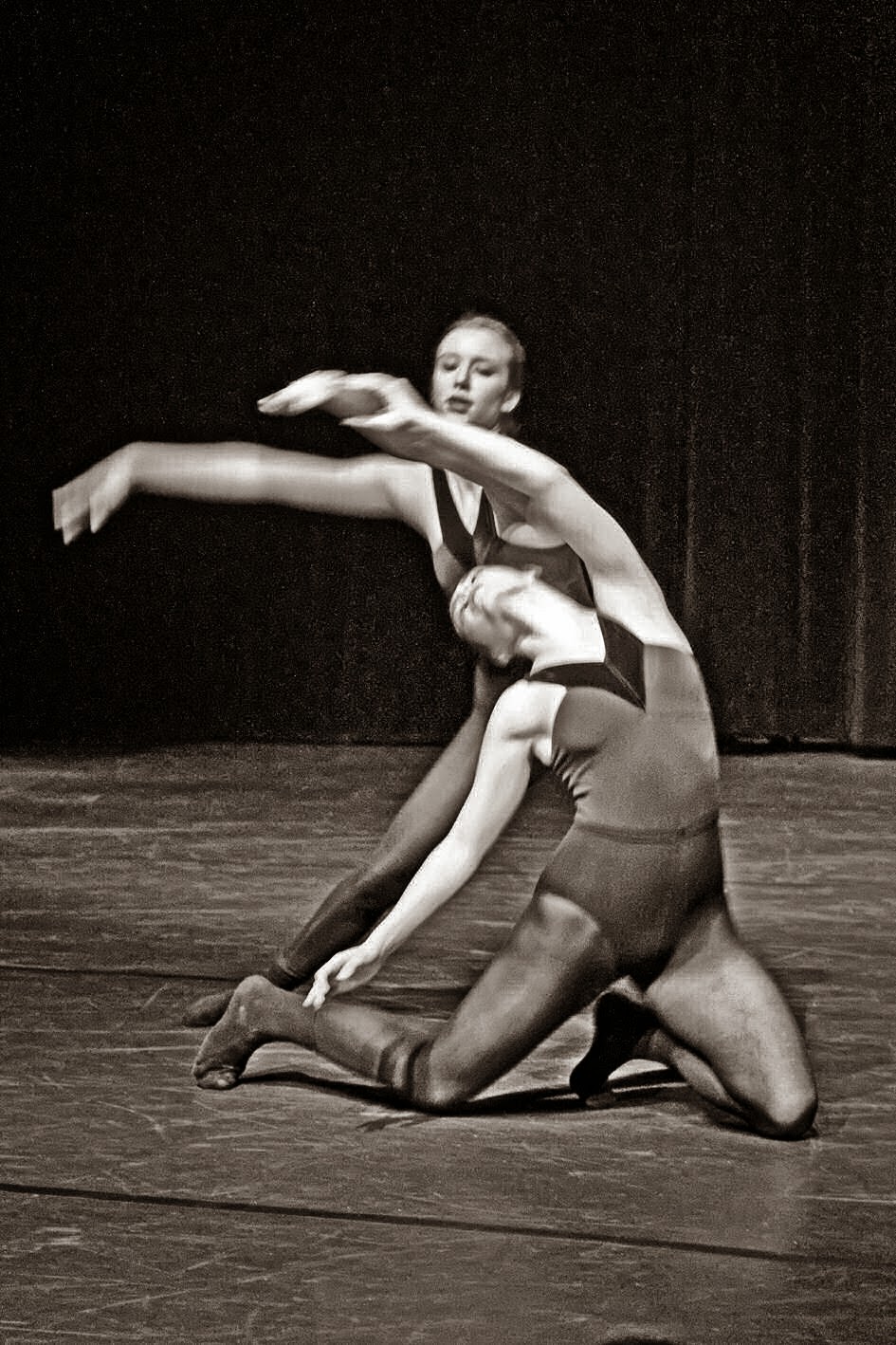Swirls At Arts Umbrella Dance Company
Saturday, February 08, 2014
 |
| Simone Orlando in charge |
This last Sunday I went to an Arts Umbrella Dance Company Sunday Afternoon Series. This was the second I have attended. Instead of being in their 7th Avenue Studio this performance was held on Granville Island’s Performance Works.
I must state here that I am not a dance
photographer and I have never been one. I limit myself to taking portraits of
dancers in my studio as rigidly unmoving as possible.
But anybody who has been shooting
photographs for 54 years (I am now 71 and suffer the perils of a randomly
accelerating heart) knows that in any sport or art (dance is art) there is peak
action. At peak action movement is zero. When bat connects with baseball the
bat, the ball and the player are not moving. This means that at a relatively
low shutter speed, action will be frozen.
But anybody who has been shooting
photographs… will know that frozen motion rarely suggests motion. To suggest
motion you must show motion in progress.
One way to show motion is to pan your
camera. You can follow a runner going past you in a parallel line (for other
angles the rules change) and when the runner is just in front of you, you press
the shutter at around 1/15 or 1/30 of a second. And you keep moving your camera.
The relationship between the runner and your camera in motion is zero. But the
background will be blurred because it will be not moving but your camera will. Sometime
in the middle 60s I figured out after some experiments that to pan a Formula 1
car you panned with a shutter speed that was inversely proportional to the
speed of the car in km/hour. So if the car was going at 250 Km/hour you panned
at 1/250 of a second. There were other factors of which I will not detail here
that involved how close the car was to you and the focal length of your lens.
Dance is a different situation as dancers
do not run or move in predictable directions or in linear manner.
My experience has shown me that the magical
shutter speed to show blur, but with enough detail to show what the blur is,
usually happens at a starting shutter speed of 1/15 of a second with interesting
variations at 1/8 and ¼.
I tested these theories of mine at the first Arts Umbrella Sunday Series on January 19th. My results in
which I used a digital Fuji X-E1 which I rated at 3200 ISO in b+w mode where
spectacular to this cynical-seen-everything photographer.
It would be an understatement that I was
most excited and waited with lots of anticipation the second opportunity.
Alas that second opportunity happened in a
jet black box which is what Performance Works is. My camera was unable to focus
quickly and I had to take many more photographs that I wanted to. But the
results tell me that if I kept at this I might just become an efficient dance
photographer.
What I cannot figure out is why this city
shows so many photographs of dancers suspended in mid air with a sharpness that
defies, almost, credibility and few seem to be going in my direction.
At this point I would like to thank Artemis
Gordon and her Dance Company for allowing this old redundant magazine
photographer to take chances with the Company’s fine dancers. The experience
has been not only pleasant but thrilling, too!
And how was I to know that this past Tuesday I would be able to photograph Ballet BC/Turning Point Ensemble's rehearsal of Grace Symmetry at the very place where all these swirly blurs all began, at the Arts Umbrella Dance Company's 7th Avenue studio!
And how was I to know that this past Tuesday I would be able to photograph Ballet BC/Turning Point Ensemble's rehearsal of Grace Symmetry at the very place where all these swirly blurs all began, at the Arts Umbrella Dance Company's 7th Avenue studio!





























































